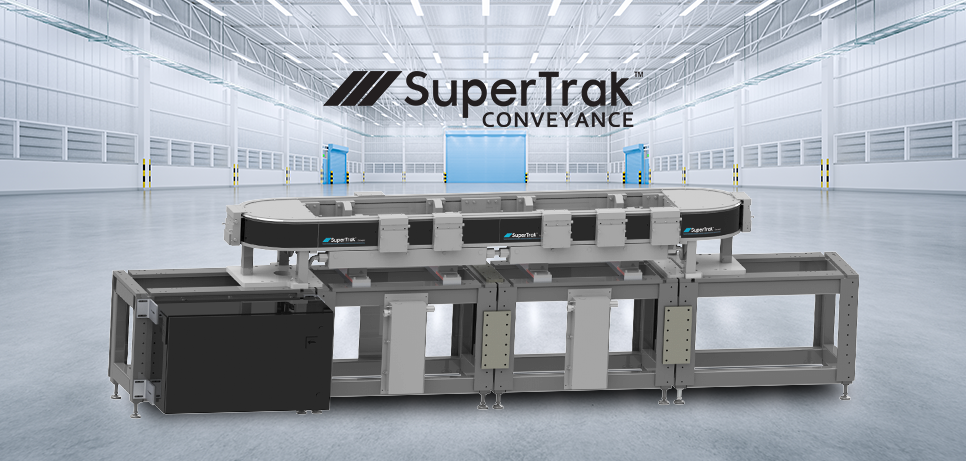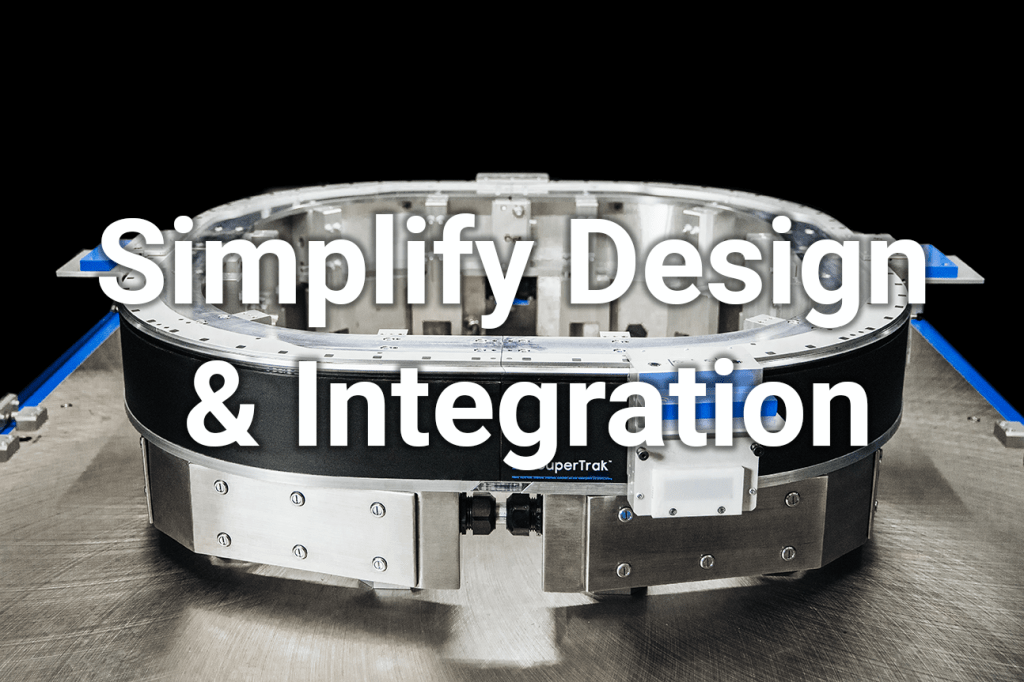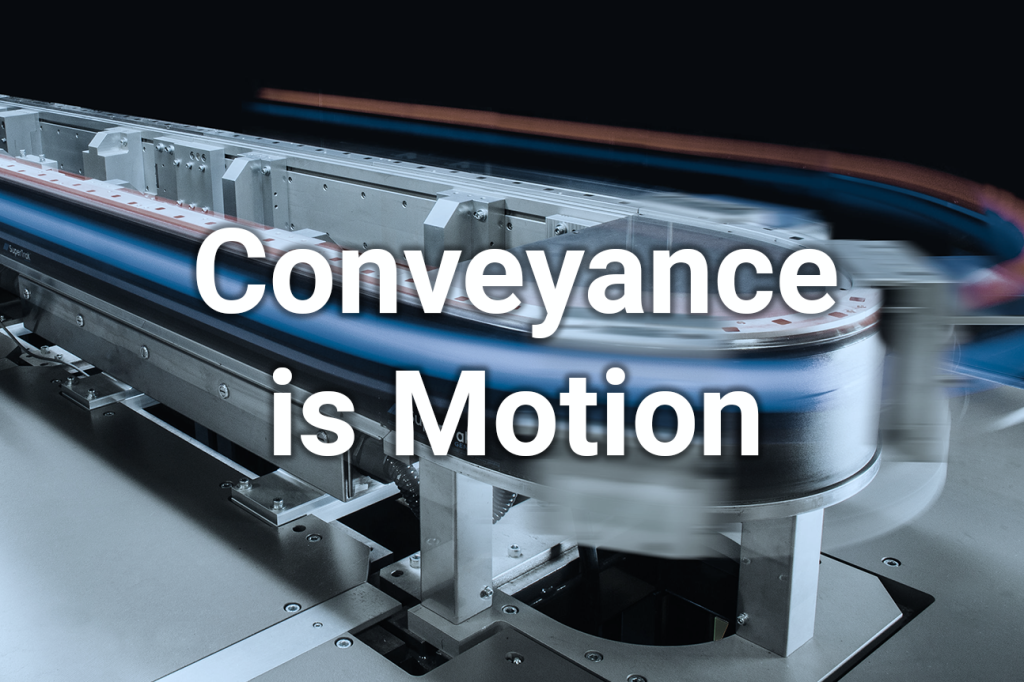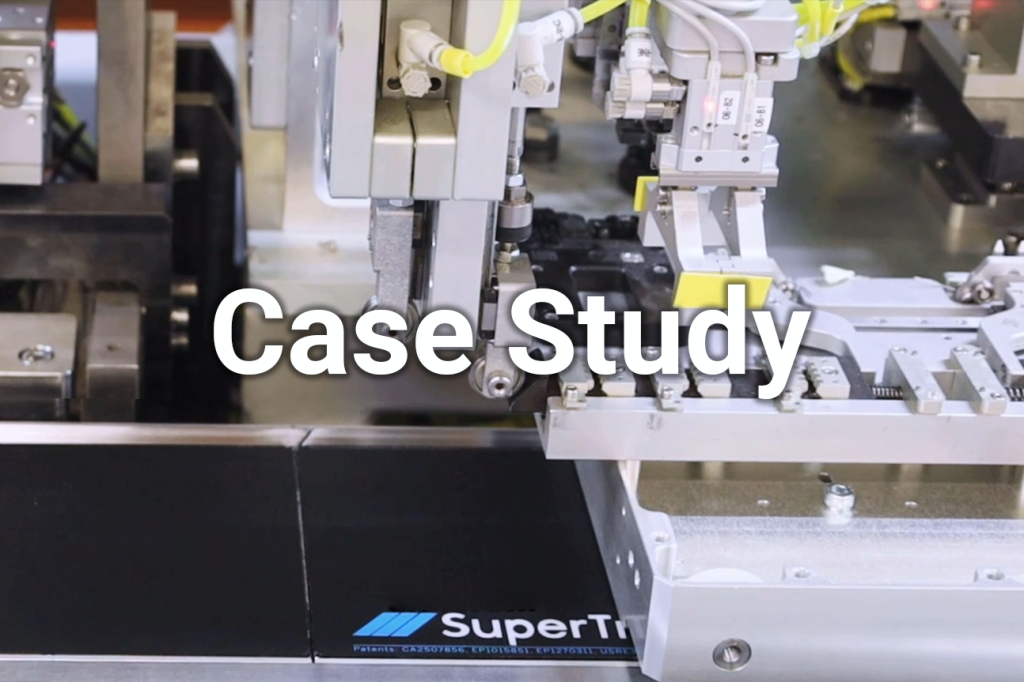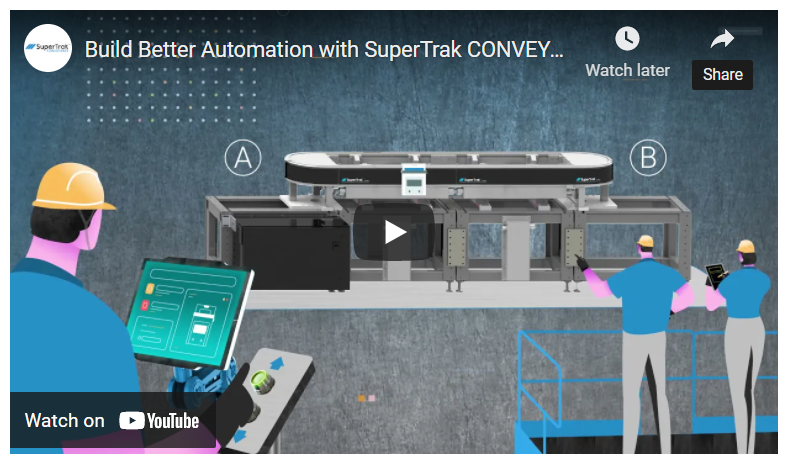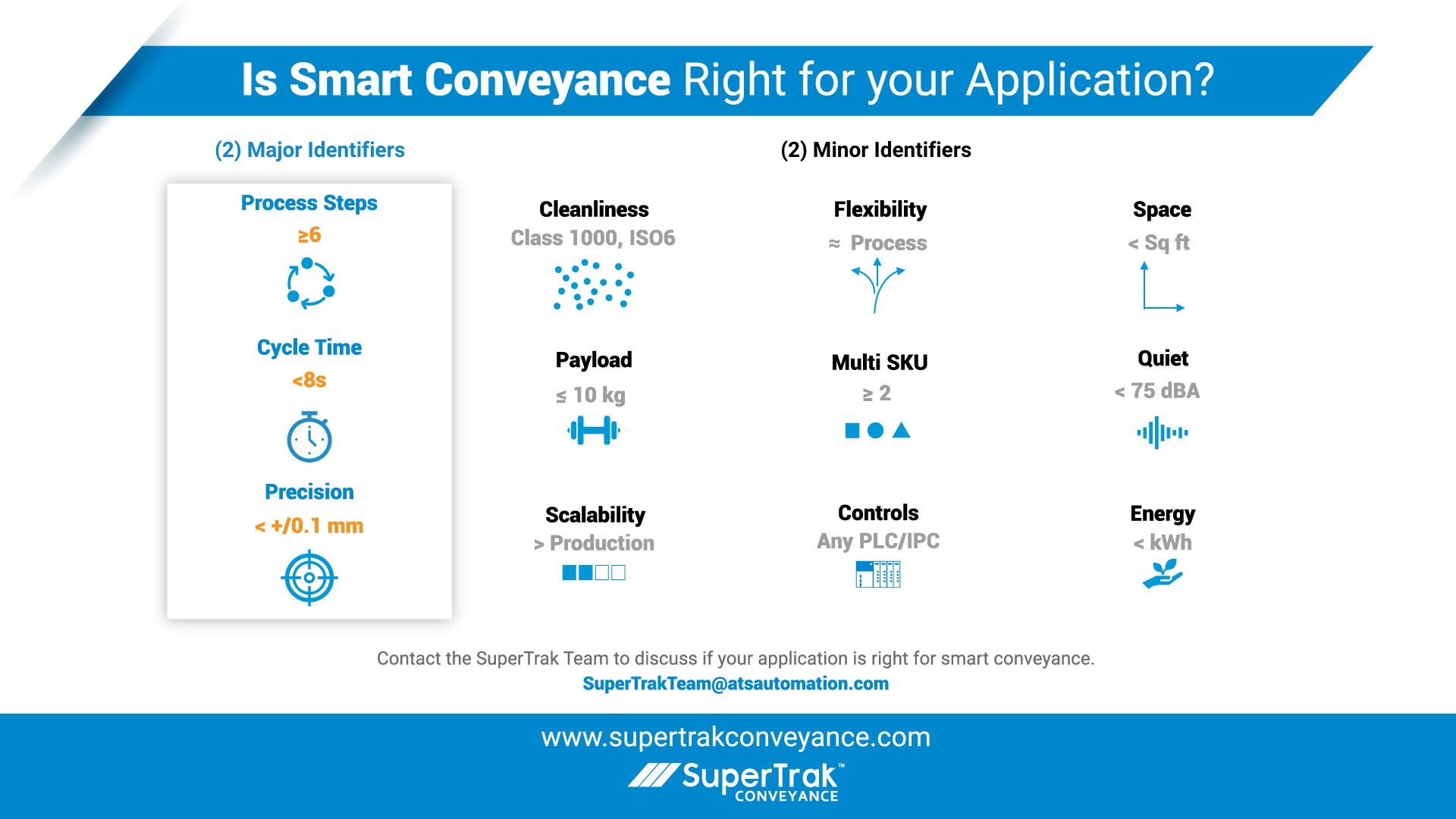Not sure if Smart Conveyance is a fit for your applications? Read more about how to assess whether Smart Conveyance can help you.
Factory Floor Space Optimization
Learn more about how Helping Machine Builders
What is Smart Conveyance?
Smart Conveyance acts as the foundation of your automation process. It combines the elements you already know that are inherent in conveyance and conveyors with the capabilities of advanced digital technologies to enable diagnostics, performance optimization, and an intelligent user interface.
A smart conveyor system like SuperTrak GEN3™ offers 3 major advantages over a traditional conveyor system like an indexing dial or a power and free conveyor – more precision, higher speeds, and independent shuttle control.
Traditional Conveyance vs Smart Conveyance
Traditional Conveyance
Smart Conveyance
A traditional conveyor requires a cylinder to stop the shuttle at the station, and additional tooling to locate the shuttle before the station can start working.
Smart conveyance is powered by servo precision.
Indexing can be slow in traditional conveyance and it can require duplicating functionality.
Smart conveyance allows for fast indexing that reduces duplicate functionality.
Traditional Conveyance often requires a constant pitch along the entire system even if the space is not required for tooling.
Independent shuttle control with Smart Conveyance provides a means to change the pitch.
What is Conveyance?
The conveyance system you choose is the foundation of your automation process for several reasons:
Motion
Understanding the motion capability of the conveyance determines what needs to be built on top of it. Conveyance is motion; it moves a part or workpiece from station to station. Most conveyors are passive. They don’t contribute to the process and just move the part from A to B. Smart conveyance on the other hand means that motion can be active, it has an impact on the process itself. From a conveyance perspective, this would include things like:
- Indexing parts on a shuttle to utilize one piece of tooling to work on multiple parts.
- Changing velocity and acceleration (i.e., unsecured parts placed onto a shuttle may require a lower acceleration until they are properly secured)
- Utilizing the conveyance as an axis rather than adding additional actuation to the station design
- Heating/Curing/Cooling – (i.e., slow down shuttles as they move through a heating tunnel)
- Pressing parts together
- Camming (i.e. utilizing an external cam to move the shuttle shelf into the required position for station processing)
Footprint
The shape and size of an automation system are often the result of the foundation. Utilizing the features of the SuperTrak CONVEYANCE™ platform can have a significant impact on tooling complexity and the number of stations required, resulting in less square footage on the factory floor. Additionally, the system configuration options with SuperTrak™ allows designers to accommodate unique spacing challenges such as a support columns or fixtures. SuperTrak™ can even be built around or integrated into existing automation.
Process
Conveyance is the process (station) connector. It defines the system flow and directly affects the simplicity/complexity of process changes. Does it need to be scaled in the future? Will your process need to adapt and change as you iterate on your product? The right conveyance selection provides the flexibility to enable future business considerations.
Operational Equipment Effectiveness (OEE)
Conveyance impacts all three components of OEE:
- Availability – Conveyance is the one component that spans the entire system. If it’s down, everything is down.
- Quality – Conveyance tracks the status and the destination of good parts and bad parts. It can also track the history of a bad part to determine if it can be converted to a good part.
- Performance – Conveyance is critical to getting parts in and out of stations to meet cycle time requirements
Data
Conveyance is the “process connector”. It can act as a conduit to collect information about the overall system status and the parts being produced.
Types of Conveyance
There are a lot of conveyance options on the market today. Let’s break down the advantages and disadvantages of the major ones.
Indexing Conveyor
A belt or chain that moves (indexes) at a constant pitch and time. The motion is synchronous.
An indexing conveyor is ideal when the system cycle time is greater than or equal to the slowest station cycle time and the floorspace available can accommodate a constant pitch (station to station distance) across the entire system.
Benefits:
- Synchronous motion
- Effective if the system cycle time is ≥ to the slowest station cycle time
- There is enough floorspace to accommodate a constant pitch across the entire system
Limitations:
- Can’t accommodate a variable pitch.
- Floorspace is limited
- Ineffective if cycle times vary from station to station

Power and Free Conveyor
A belt or chain that moves pallets (or shuttles) that are not directly connected (free) to the belt or chain (power). This allows shuttles to be stopped anywhere on the system using some form of actuation (i.e. stopper cylinder) while the power mechanism continues moving. Synchronous and asynchronous motion is possible.
Power and free conveyors can accommodate inconsistent cycle times, but generally requires extra engineering (mechanical, electrical, & controls) for the utilization of stopper cylinders, and locate tooling if repeatability requirements are tight.
Benefits:
- Accommodates variable station cycle times.
- Capable of synchronous and asynchronous motion.
Limitations:
- Additional integration time
- Additional spare parts and maintenance

Indexing Dials / Dial Table / Rotary Table
A dial is a table that rotates (indexes), moving parts between stations. It is similar in capability to an indexing conveyor: the pitch and the time are constant, so it is synchronous. One key advantage with a dial, however, is that the size and shape of the system footprint can be smaller than other forms of conveyance.
Benefits:
- Smaller system footprint
- Effective if the system cycle time is ≥ to the slowest station cycle time
Limitations:
- No Asynchronous motion capability
- Ineffective if cycle times vary from station to station

Smart Technology
What does it mean for technology to be smart? There must be a level of capability inherent inside it that can be used like a service. Smart phones, sensors, thermostats, cars, and fridges are examples of smart technologies and products making life easier and more efficient. You don’t necessarily need to know the complexity of how it functions as the technology does that for you, you just need to know how to use it.
The factors that define smart products are:
- Integrated Functionality
- Performance Optimization
- Diagnostic Insight
- Energy Efficiency
- User Interface
The benefit of this technology in the manufacturing space is that it can greatly reduce your footprint, downtime recovery, and improve OEE.
Integrated Functionality
One thing that a Smart Conveyance platform like SuperTrak™ has that traditional conveyors do not is integrated functionality, including:
- Target routing
- Position triggers
- Pre-arrival notifications
- Set motion parameters
- Motion regions
- Collision avoidance
- Offsets
- Shuttle length
- Shuttle ID
- And more


